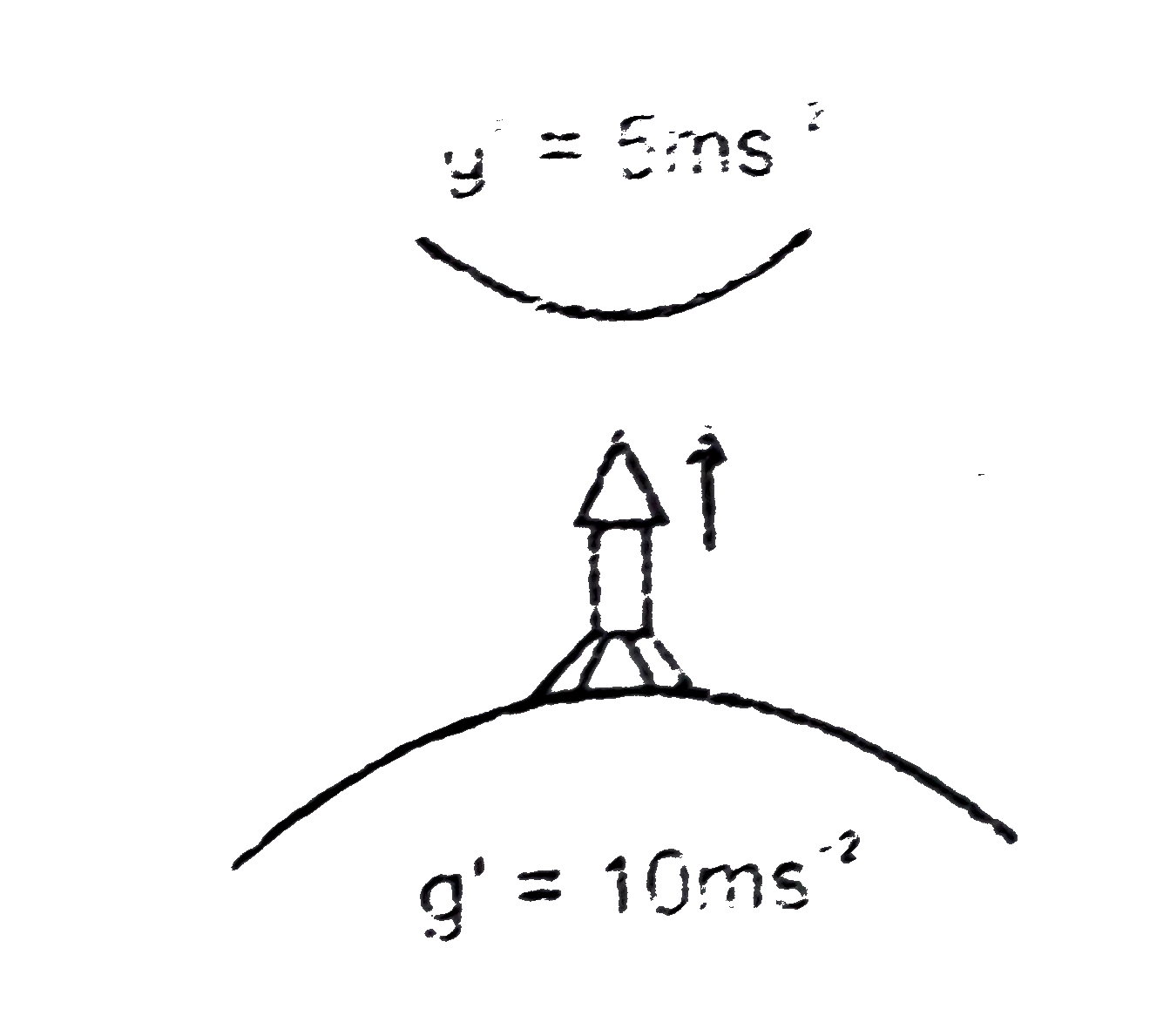Suppose the acceleration due to gravity at earth's surface is and at the surface of Mars it is . A passenger goes from the to the mars in a spaceship with a constant velocity. Neglect all other object in sky. Which part of figure best represent the weight (net gravitational force) of the passenger as a function of time?

The correct Answer is:C
Note that there must be some point where the gravitational field of the earth is balanced by the gravitational field of Mars.
Topper's Solved these Questions
- GRAVITATIONBook:CENGAGE PHYSICSChapter:GRAVITATIONExercise:Multiple Correct
Explore 24 Videos
- GRAVITATIONBook:CENGAGE PHYSICSChapter:GRAVITATIONExercise:Assertion- Reasoning
Explore 13 Videos
- GRAVITATIONBook:CENGAGE PHYSICSChapter:GRAVITATIONExercise:Subjective
Explore 15 Videos
- FLUID MECHANICSBook:CENGAGE PHYSICSChapter:FLUID MECHANICSExercise:INTEGER_TYPE
Explore 1 Video
- KINEMATICS-1Book:CENGAGE PHYSICSChapter:KINEMATICS-1Exercise:Integer
Explore 9 Videos
Similar Questions
Suppose the acceleratio due to gravity at thth's surface is 10ms−2 and at the surface of Mars it is 4.0ms−2. A passenger goes from the to the mars in a spacehip with a constant velocity. Neglect all other object in sky. Which part of figure best represent the weight (net gravitational force) of the passenger as a function of time?

View SolutionThe acceleration due to gravity at the moon's surface is 1.67ms−2. If the radius of the moon is 1.74×106m, calculate the mass of the moon.
View Solution
Knowledge Check
Acceleration due to gravity at earth's surface is 10ms−2. The value of acceleration due to gravity at the surface of a planet of mass (15)th and radius 12 of the earth is
A4ms−2B6ms−2C8ms−2D12ms−2Let g be the acceleration due to gravity at the earth's surface and K the rotational kinetic energy of the earth. Suppose the earth's radius decreases by 2%. Keeping all other quantities constant, then
Ag increases by 2% and K increases by 2%Bg increases by 4% and K increases by 4%Cg decreases by 4% and K decreases by 2%Dg decreases by 2% and K decreases by 4%The value of g (acceleration due to gravity) at earth's surface is 10ms−2. Its value in ms−2 at the centre of the earth which is assumed to be a sphere of radius R metre and uniform mass density is
A5B10RC102RDzero
The value of acceleration due to gravity at earth's surface is 9.8ms^-1 . The altitude above its surface at which the acceleration due to gravity decreases to 4.9ms^-2 ,is close to (Take,radius of earth =6.4*10^6 m )
View SolutionThe acceleration due to gravity on the surface of the moon is 1.7ms−2. What is the time perioid of a simple pendulum on the surface of the moon, if its time period on the surface of earth is 3.5s? Take g=9.8ms−2 on the surface of the earth.
View SolutionIf accleration due to gravity on the surface of earth is 10ms−2 and let acceleration due to gravitational acceleration at surface of another planet of our solar system be 5ms−2 An astronaut weighing 50kg on earth goes to this planet in spaceship with a constant velcity The weight of the astronaut with time of fiight is roughly given by
 .
.
View SolutionThe value of acceleration due to gravity at earth's surface is 9.8ms−2. The altitude above its surface at which the acceleration due to gravity decreases to , is close to: (radius of earth =6.4×106m)
View SolutionThe acceleration due to gravity at the poles is 10ms−2 and equitorial radius is 6400km for the earth. Then the angular velocity of rotaiton of the earth about its axis so that the weight of a body at the equator reduces to 75% is
View Solution

